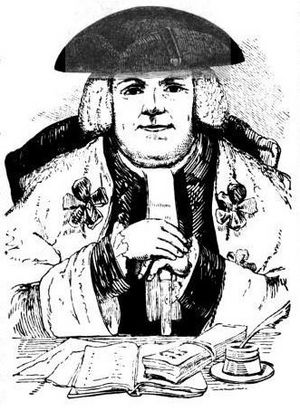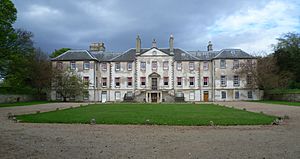David Dalrymple, Lord Hailes facts for kids
Sir David Dalrymple, Lord Hailes (born October 28, 1726 – died November 29, 1792) was an important Scottish figure. He was a skilled lawyer, a respected judge, and a careful historian. He was born in Edinburgh, Scotland.
Life of Lord Hailes
David Dalrymple's father, Sir James Dalrymple, was a government official in Scotland. His mother, Lady Christian Hamilton, came from a noble family. David was the oldest of their sixteen children!
David went to a famous school called Eton College in England. He then studied law at the University of Utrecht in the Netherlands. In 1748, he returned to Scotland and became a lawyer. When his father died in 1751, David became the 3rd Baronet of Hailes. He also inherited Newhailes House, a large estate near Musselburgh.
As a lawyer, David Dalrymple was known for his strong knowledge and honesty. He worked very hard. In 1766, he became a judge in the Court of Session, Scotland's highest civil court. This is when he took the special title of Lord Hailes. Ten years later, he was also made a judge in criminal cases.
In Edinburgh, he first lived in rooms near the old Scottish mint. Around 1780, he built a new house at 23 New Street. Lord Hailes passed away at Newhailes House on November 29, 1792. He is buried in his family's burial place at Morham churchyard.
Lord Hailes's Family
Lord Hailes was married two times. His first wife was Anne Broun, and they had a daughter named Christian.
His second wife was Helen Fergusson. They had another daughter named Jean. Jean later married her cousin, James Fergusson, and they had children.
After Lord Hailes died, his special title of Baronet passed to his nephew, James. This nephew was the son of Lord Hailes's brother, John Dalrymple.
There's an interesting story about Lord Hailes's will. After he died, his daughter Christian almost lost her inheritance of Newhailes House. His will, which would have given her the estate, could not be found! She faced losing the house to a male cousin. Christian sent her staff to close up her Edinburgh house. As they were closing the window shutters, Lord Hailes's will fell out from behind a hidden panel! This will made sure Christian kept the estates, which she enjoyed for over forty years.
Lord Hailes as a Historian
One of Lord Hailes's most important books was called Annals of Scotland. The first part came out in 1776, and the second part in 1779. His friend, the famous writer Samuel Johnson, said it was like a "Dictionary" of facts. It contained carefully checked information about Scottish history. It told everything important that was known, but without fancy language.
Lord Hailes wrote many other books and papers. Some of them include:
- Historical Memoirs concerning the Provincial Councils of the Scottish Clergy (1769)
- Remarks on the History of Scotland (1773)
- Account of the Martyrs of Smyrna and Lyons in the Second Century (1776)
- The History of the Martyrs of Palestine, translated from Eusebius (1780)
In 1786, he published a book that questioned some ideas by another famous historian, Edward Gibbon. Lord Hailes's book was called An Inquiry into the Secondary Causes which Mr Gibbon has assigned for the Rapid Growth of Christianity. It was one of many replies to Gibbon's ideas about how Christianity grew quickly.
Images for kids





